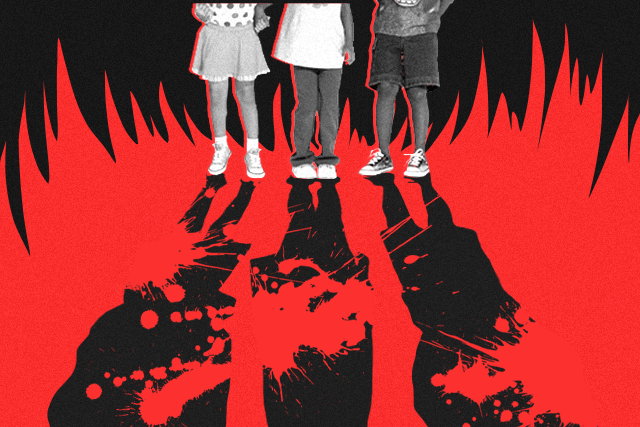
I’ve recently had the privilege of being one of the few people present in a panel discussion initiated by non-profit organization Plan International on sexual exploitation in the country, and was able to hear experts talk about what our current state really is on this issue—and I bear no joy in delivering this news, but the reality is, it’s deplorable. There’s no other way to say it. The number of sexual harassment and child exploitation cases in our country is alarming, to say the least. Let me start by presenting the cold hard facts, in the hopes that they will wake us up into action.
600,000
Reports based on the country’s social welfare department say that there are at least 60,000 to 600,000 Filipino street children who are prostituted annually. Did you know that the Philippines belongs in the top 5 in the world? According to UNICEF, we rank as the fourth nation with the most number of prostituted children. That’s not a rank we should be proud of.
1 every 62 minutes
According to a study by the Center for Women Resources (CWR), one child or woman is raped every 62 minutes. Let that sink in for a moment. The group also found out that 70 percent of the victims are children, with women from the lowest economic group more prone to violence, including rape.
1 out of 5
Another study by UNICEF claims that one out of five Filipino children suffer from sexual violence at home, in school or in the community. It is also interesting to note that we currently have one of the lowest age of sexual consent in the world at 12 years old. This is alarming, as a study from the Department of Health found that most recorded victims of sexual abuse are between 13 and 15 years old. Furthermore, although a 12-year-old can legally give consent to sex, they are prohibited to access the safeguards to protect them from teenage pregnancy and/or STDs.
8 out 10
According to UNICEF, Children are at risk of online sexual abuse and bullying. In the Philippines, it is estimated that thousands of children are exploited for sexual purposes online and offline. According to a study by Plan International, Internet accessibility, cheaper technological gadgets, and lack of parental supervision coupled with lack of education and negative peer influences make children vulnerable to online harassment.
750,000
USA’s Federal Bureau of Investigation reports that there are 750,000 child predators online at any given time, with several reported cases of cybersex crime coming from our country. CSEC or commercial sexual exploitation of children which includes prostitution, pornography, and trafficking of children, has become an epidemic in the country. Plan International reports that cybersex dens have been operating in almost all parts of the country since 2012. Even more alarming, family-run cybersex operations where parents of the child or entire communities are involved has become pervasive in the country.
1 out of 3 human trafficking victims is a child. In the Philippines, it is estimated that thousands of children are exploited for sexual purposes online and offline. Join our fight against CSEC! Children are #NotForSale.#ENDHumanTrafficking
WATCH VIDEO https://t.co/mXRfYD5NEU pic.twitter.com/USwpZ3equr
— Plan International Philippines (@planphilippines) July 26, 2018
I know these numbers can be discouraging, but we mustn’t lose hope yet. So what can be done? Reporting cases is a must, of course. When it comes to sexual harassment and child exploitation, there is no excuse for tolerating the culture of silence. But while speaking out is crucial, the reality is, it addresses an act already done. Thus, to prevent the act itself, the solution must go deeper than that.
According to Mr. Anthony Pangilinan of Called to Rescue, one of the problems is, the cycle seems never-ending because today’s preys usually become tomorrow’s predator. Thus, to stop it, we have to nip it in the bud. Since most victims are minors, which usually means they are unaware of their rights, one solution is to spread awareness. Another is to treat this problem in all its seriousness. The fact is, human trafficking is the second largest criminal activity in the world, and is even predicted to overthrow drug trafficking and eventually become first, maybe sooner than we think. In our country, it thrives for a myriad of reasons, including widespread poverty. Most victims, especially of CSEC, are those desperate to escape poverty or provide for their families. Another is the lack of supervision. Children become vulnerable because they lack proper guidance from parents or mentors. They are often overlooked and thus seek others for love and validation. Psychologist and child rights advocate Dr. Elizabeth Protacio-De Castro emphasized the importance of parents’ and mentors’ roles on children. Ultimately, she said, children are tough but we tend to take their strength for granted. We might not be able to be there for them every step of the way, but we can at least equip them with proper life skills to prepare them for the tough yet inevitable challenges in life.
For more information and assistance, you can also get in touch via these hotlines:
1. Inter-agency Council Against Trafficking, 1343 (in Manila); 02 1343 (outside Metro Manila).
2. Philippine National Police (PNP) Hotline Patrol, Anti-Cybercrime Group, (02) 722-0650, 0917-847 5757.
3. Plan International Philippines, (02) 813 0030 to 32
4. End Child Prostitution, Child Pornography & Trafficking of Children for Sexual Purposes (ECPAT), (02) 920-8151
You can also go to Plan International’s website to report sexual harassment or child exploitation.
Art by Marian Hukom
For the latest in culture, fashion, beauty, and celebrities, subscribe to our weekly newsletter here
Follow Preen on Facebook, Instagram, Twitter, YouTube, and Viber
Related stories:
The PH age of consent is 12 years old and you should be alarmed
A chilling story on child rape and its possible causes
Virgin Marie is a harmful portrayal of child rape accusations
Stop making pedosexual a thing, you creeps


